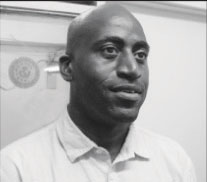
IT IS most impressive to observe the scores of our top performers at the 2017 Common Entrance Exam, led by Rhea Barret of the Camille Henry Memorial Primary School with an enviable score of 98.3 percent. Congratulations to her and all those who have passed the exam.
Those who helped nurture the talent of our students, including their parents, guardians, families and teachers, also need to be congratulated. These students will one day take their rightful place among our nation’s and region’s leaders and their strong start, gained among us, should lead to our future benefit, assuming, of course, that we make no mistakes with the systems responsible for their training, growth and development.
The synopsis of the exam results, released by the Evaluation and Assessment Unit of the Ministry of Education, needs to be carefully studied — and responded to — with a precision matching the intensity of our top performers. The league tables presented in that synopsis compared the performance island-wide and revealed that of 90 participating schools, only 30 schools scored at least the national mean of 60.62 percent.
From an ICT and Computing Science perspective, the STEM subjects (Science, Technology, Engineering and Mathematics) are of great importance. With national mean for Mathematics hovering in the mid-to-high fifties, there is need for more work to build the capacity of our students, especially as they prepare for the greater challenges of secondary school.
While we celebrate the performance of our top achievers, we should also focus on initiatives to raise the general standard of our students’ performance and to reduce the chasm between the top performers and the weaker students.
Five schools were observed with a mean score below 50%, which means that on average, those students failed. Further imbalances persist, with seven schools accepting students with results measured in the teens. Technically, those students still have a chance to catch up with others at better-performing secondary schools, but can they reasonably be expected to shine with such odds stacked against them, especially when compared to higher achievers?
By no means does this simple analysis come close to doing justice to the depth and level of introspection needed. But as a former secondary school teacher myself, I wish the students and teachers every success.
What may we do to improve outcomes generally? Here are a few suggestions:
*) Identify and assist the slower learners well before the arrival of exams; and
*) Incentivise and reward schools in proportion to increases in performance.
Such changes would encourage the better-regarded schools to continue their advancement while also highlighting the largely overlooked and outstanding effort taking place at weaker schools. If we don’t invest enthusiastically in our youth and students, then their poor performance remains our fault.
To share your views, contact the author at: www.datashore.net or via The VOICE.
About the Author
Dr.Lyndell St. Ville is an ICT Consultant based in Saint Lucia. His expertise includes systems analysis, design, and security strengthening.













